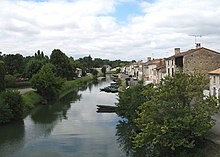Jean Hoeufft
This article, Jean Hoeufft, has recently been created via the Articles for creation process. Please check to see if the reviewer has accidentally left this template after accepting the draft and take appropriate action as necessary.
Reviewer tools: Inform author |
You can help expand this article with text translated from the corresponding article in Dutch. (March 2017) Click [show] for important translation instructions.
|

Jean Hoeufft , Count of Fontaine-le-Comte, (Liege, 1578 - Paris, 5 september 1651) was a French banker and arms dealer, Commissioner of the States-General at the French court, treasurer and Secretary to King Louis XIII of France, which position he held until his death.
Hoeufft made a fortune from his diplomatic and business ventures, ultimately becoming one of the richest men in Europe outside the various royal families. [1]
Hoeufft occupied a prominent place in the network of political interests that bound together France’s structure of alliances during the Thirty Years War. "In some sense, his political interests were so tightly interwoven with his financial and mercantile interests that they are difficult to disentangle." [2]
The Hoeufft family invested over a million livres in reclamation of lakes and swamps in Picardie, Poitou and other parts of France[3], welke werken merendeels door Nederlandse ingenieurs, zoals Jan van Ens, werden uitgevoerd.[4][5]
Hoeufft died in Paris on 5 september 1651.[6]
Biography
Hoeufft had, because of his protestant faith, wandered widely with his father, finally settling in Rouen where he was naturalised in 1601. Tot koninklijke raad en secretaris benoemd, verhuist hij naar Parijs, schiet de Koning herhaaldelijk geld voor, en neemt deel aan belangrijke financiële operaties, zoals o.a. de archieven van Jules Mazarin en van het huis van Oranje uitwijzen.[7]
Het verslag van Cornelis van Aerssen van Sommelsdijk en zijn broer bevat andersoortige details.[8] Nadat er ruzie was ontstaan tussen de erfgenamen, Hoeufft was ongetrouwd, zou een zekere Beck, een familielid en zuiplap, in januari 1658 iemand de kop hebben ingeslagen.[9] Mogelijk had hij een houten been, waarmee hij om zich heen maaide, zodat ook nog twee anderen half dood neervielen. Vervolgens werd hij overgebracht naar een kamer naast de keuken en sloeg de hand aan zichzelf met een mes. Zijn bezittingen werden in beslag genomen en ter beschikking gesteld aan Michel de Grammont. Zijn lichaam werd niet opgebaard in het Louvre, maar in een kerker en het lijk is vervolgens naar Holland getransporteerd.
In 1736 werd het bezit bij Petit Poitou bij Luçon in de Marais Poitevin verkocht.
References
- ^ MACDONALD, CALEIGH. "U Of M Prof Presents On Thirty Years War The forgotten figure of Jean Hoeufft". The Manitoban. Retrieved 7 March 2017.
- ^ Thomson, Erik. Jan Hoeufft and the Thirty Years War: An essay on diplomatic history’s limits (PDF) (PDF). Retrieved 7 March 2017.
{{cite book}}: Check|archiveurl=value (help) - ^ Thomson, Erik. "Premodern Conversations". Soundcloud. Retrieved 7 March 2017.
- ^ Globalization, Environmental Change, and Social History, geredigeerd door Peter Boomgaard en Marjolein 't Hart
- ^ http://www.dbnl.org/tekst/molh003nieu07_01/molh003nieu07_01_1127.php
- ^ Un professionnel des lettres au XVIIe siècle: Valentin Conrart, une histoire ... van Nicolas Schapira
- ^ http://www.dbnl.org/tekst/_gid001189101_01/_gid001189101_01_0082.php
- ^ [1], zie p. 396 en 525 e.v.
- ^ http://www.historici.nl/retroboeken/nnbw/#source=7&page=305&size=800&accessor=accessor_index
This article, Jean Hoeufft, has recently been created via the Articles for creation process. Please check to see if the reviewer has accidentally left this template after accepting the draft and take appropriate action as necessary.
Reviewer tools: Inform author |

